Losing weight isn’t just about dieting; it includes adding exercise to your routine and making healthy lifestyle habits. It’s a combined effort, and the more work you put into it, the faster you will see results. So many little details like walking to your destination instead of driving, getting a good night’s sleep, and being mindful of portion control throughout your day can help. Did you know that filling up on extra water all day long can help fill you up? Stick with us, and you’ll learn so many more weight loss secrets that you can easily apply to your lifestyle to help you achieve your weight loss goals.
Every one of the tips below will support your weight loss efforts. We asked registered dietitians, personal trainers, and doctors for their advice on lifestyle choices, eating and fitness habits, and nutrient intake that will help you succeed in losing weight, maintaining it long-term, and promoting good health.
Keep reading for the 20 best weight loss secrets, according to experts. And when you’re done, be sure to check out 4 People Who’ve Lost 20 Pounds Share Their No-Fail Tips.

We spoke with Amy Goodson, MS, RD, CSSD, LD, a registered dietitian, certified specialist in sports dietetics, and member of our Medical Expert Board, who explains the importance of mindful eating when trying to lose weight. Eating mindfully means paying complete attention to the act of eating. Enjoy every single bite you take, and be aware of when you feel full and hungry. “This approach helps you develop a healthier relationship with food, prevent overeating, and make more conscious food choices,” Goodson explains.
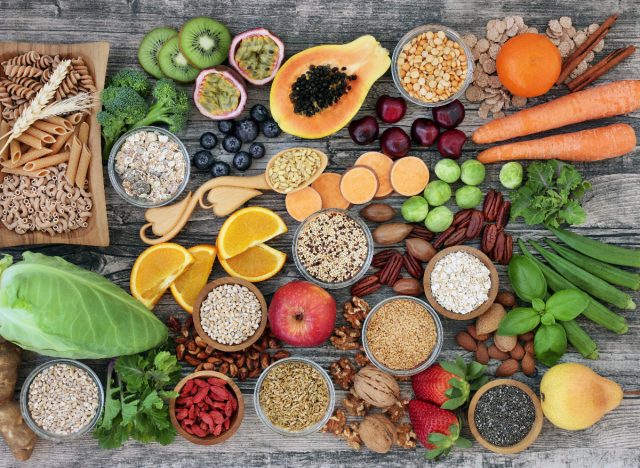
Macronutrients are your fats, proteins, and carbohydrates, and consuming a balanced amount of them helps you preserve muscle mass, balance energy levels, and keep you in good health. “Including a variety of nutrient-dense foods in each meal, including a high-fiber carbohydrate and protein, can help clients feel satisfied longer after meals and prevent excessive calorie consumption,” Goodson shares.

It’s essential to eat regularly while being mindful of your portion sizes. In doing so, you won’t eat more than you should at meals. “When your body is well-fueled throughout the day, you are typically less hungry at the next meal or snack helping to manage portion sizes,” Goodson explains. “The goal is to hang out in ‘hungry and satisfied’ versus ‘starving and stuffed.'”
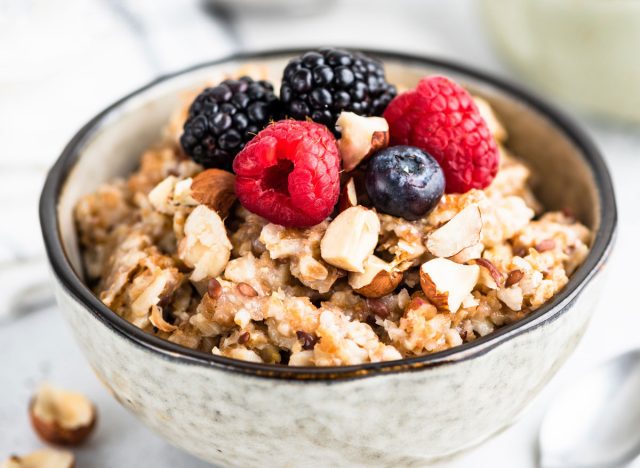
Including fiber in your diet through sources like veggies, fruits, whole grains, nuts, and legumes, is important to avoid eating too much while helping you feel full. “Fiber slows digestion and helps stabilize blood sugar levels, reducing cravings and aiding in weight loss,” says Goodson.

As we mentioned earlier, drinking a good amount of H2O all day long can keep your appetite at bay and kick up your metabolism. Goodson warns, “Sometimes, thirst can be mistaken for hunger, leading to unnecessary snacking. Staying hydrated can help you better distinguish between hunger and thirst.”

Getting comfortable with meal planning and prepping will be super helpful in your weight loss journey. Making a good shopping list can help you avoid impulsive buying, and preparing your meals in advance will deter you from ordering unhealthy takeout.
“This doesn’t mean you have to spend hours in the kitchen, but it does mean that having nutrient-rich foods available and a plan can help you eat the right foods in the right amounts,” Goodson tells us. “Planning meals with a focus on lean proteins, whole grains, healthy fats, and plenty of vegetables ensures a balanced and nutritious diet conducive to weight loss.”

By eating smaller meals more frequently throughout the day, you will get a handle on your portion sizes and prevent overeating. This also ensures you’re getting enough of the right nutrients.
Lisa Young, Ph.D., RDN, the author of Finally Full, Finally Slim, a nutritionist in private practice, and a member of our Medical Expert Board, advises, “It may help boost metabolism, improve satiety, and reduce hunger. Practicing portion control will help develop healthy eating habits for weight loss maintenance. It focuses on moderation instead of restrictive eating for flexibility and enjoyment of your weight loss journey.
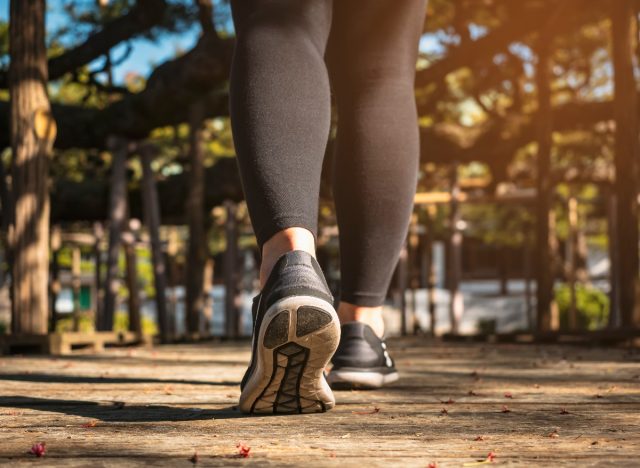
Keeping up with a healthy routine each morning is so beneficial. Be sure to get a good night’s sleep, and start your day with a healthy breakfast. Fit in some exercise, whether that’s doing a revitalizing yoga flow or going for a brisk walk. This combination each morning is a surefire way to set yourself up for success the rest of the day.
“A healthy and balanced breakfast rich in fiber, protein, healthy fats, and carbohydrates provides energy throughout the day and prevents you from overeating,” Young explains. “A healthy breakfast increases satiety to prevent cravings and consumption of unhealthy snacks leading to weight gain.”

Most individuals don’t associate good sleep with losing weight, but it’s a biggie. “Getting enough sleep is important as lack of sleep disrupts hormones by increasing hunger and appetite leading to overeating,” Young points out. “Higher levels of ghrelin stimulate hunger, increasing cravings and hindering weight loss goals. A lack of sleep elevates stress levels which negatively affects mood and can lead to emotional eating, especially foods high in sugar and unhealthy fats.”

Not only are outdoor activities so much fun and give you a healthy dose of fresh air, but they are amazing calorie burners. Don’t stress if you can’t do these every single day, but try to plan them during your time off when the weather’s nice.
Ronny Garcia, CPT, Blink Fitness, suggests, “Outdoor activities [such as] hiking, biking, or swimming are great ways to change up your workout while still maintaining a challenging exercise routine.”

Your time is precious, so you want to make absolutely sure your workouts count. By performing interval training, you can burn a lot of calories in the time you spend at the gym.
Garcia tells us, “Alternating between high-intensity (HIIT) and low-intensity during cardio workouts helps burn more calories and improves [your] cardiovascular health.”

You’ve likely heard time and time again how beneficial strength training is, yet you may not consider it as part of an effective weight loss routine. You want to lose weight and not build muscle, right? Wrong! Strength training is a crucial aspect of weight loss, so don’t spend all of your gym time on the treadmill or elliptical.
Garcia advises, “Building lean muscle boosts metabolism, increases calorie output, and helps create a toned look.”

This is an easy step once you get used to it. You’re likely wondering, “What is functional training?” According to Garcia, this form of training basically stimulates movements you do throughout the day—like reaching down to pick up grocery bags or carrying a heavy laundry basket—and improves the way you do them. Some examples include jump squats, pushups, walking lunges, squats, and even balancing on one leg.
“Functional exercises simulate real-life activities and movements,” Garcia says. “These exercises engage multiple muscle groups, contributing to over health and strength.”
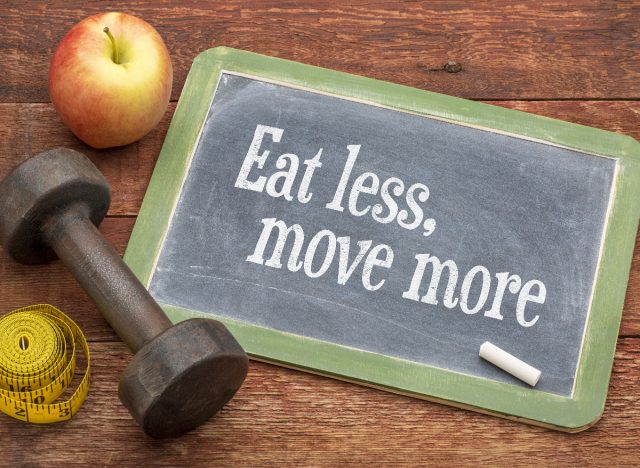
Establishing a calorie deficit is the name of the game if you want to shed weight and get into shape. “Ensuring that your calories consumed are less than your basal metabolic rate will ensure weight loss,” Garcia says. So bump up the amount of physical activity you get by adding more movement to each day, and decrease the amount of calories you consume!
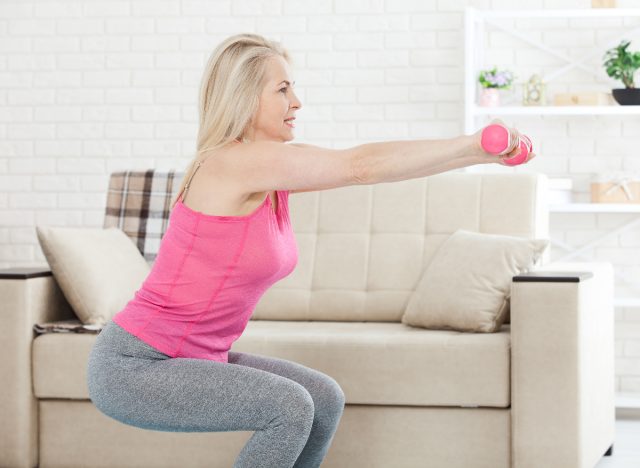
Circuit workouts are golden. They’re a combination of cardio and strength exercises that allow you to keep your heart rate up as you maximize your calorie burn in a short period of time, Garcia explains.
A circuit-style workout typically features a combo of timed exercises (like pushups, bent-over dumbbell rows, bicep curls, ball crunches, and dumbbell squats, for example), along with breaks to rest in between each “series.”

Resting probably doesn’t sound like an important part of losing weight, but active rest days are just as important as your time spent at the gym. Garcia explains, “On rest days (i.e. days you aren’t engaging in cardio or strength training), focus on walking or yoga to promote recovery while also staying active.”

Relieving stress is essential for weight loss and your overall health. After all, research connects the stress hormone known as cortisol to excess fat. According to Garcia, “Similar to active rest days, incorporating yoga can help reduce stress and contribute to overall recovery (both mind and body).”
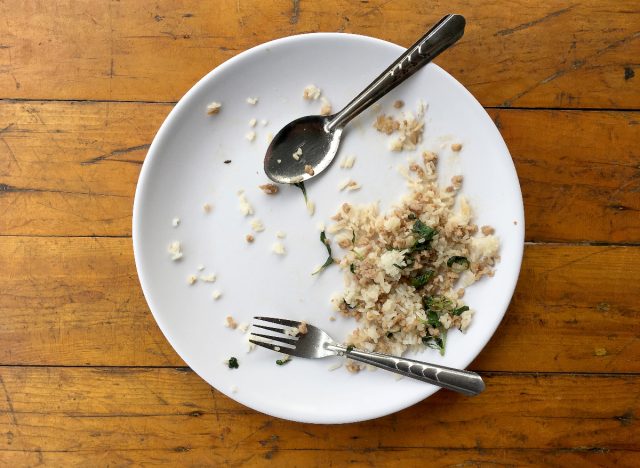
According to a study in the Cochrane Database of Systematic Reviews, by not eating every bite on your plate, you can eliminate approximately 280 calories every single day. This is a smart habit to get into, considering research shows that 92% of adults eat every single bite on their plate!
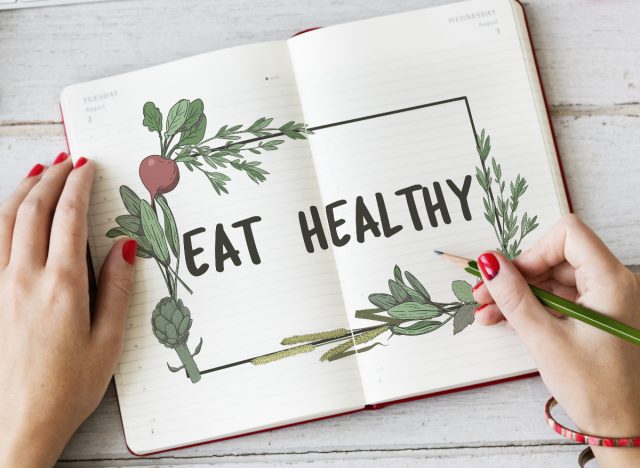
Research proves that keeping track of every single thing you eat each day can hold you accountable and cut your calorie count instantly. In fact, according to a study published in the Journal of Obesity & Weight Loss Therapy, writing in a food diary can actually double your weight loss—so keep one close, and start tracking your eating habits!
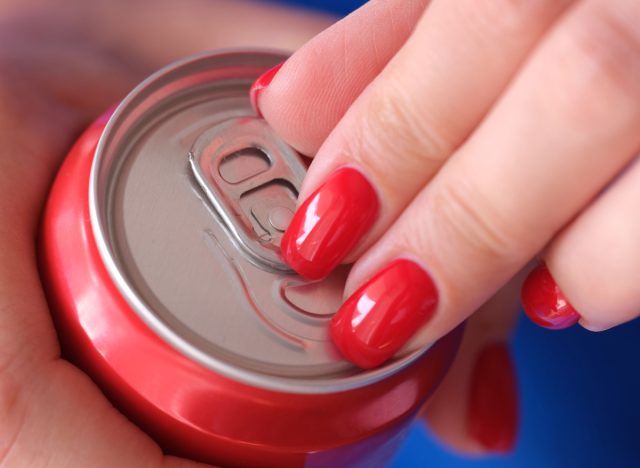
Soda may taste like a refreshing, bubbly treat, but it’s filled with calories and void of nutrients. According to the Centers for Disease Control and Prevention (CDC), regular soda contains over 10 teaspoons of added sugar, which is around 150 calories. In addition, CDC research discovered that around 30% of Americans ages two and up over-consume added sugar on a daily basis. By eliminating two regular sodas from your day, you can cut down your total calorie intake by 2,100 each week.
Instead of grabbing a soda, opt for water. If you get tired of water, jazz it up with fresh fruit such as berries, peaches, or oranges. You can even add cucumber and mint for a refreshing sip! Not only will it look appetizing, but it will also taste delicious.









